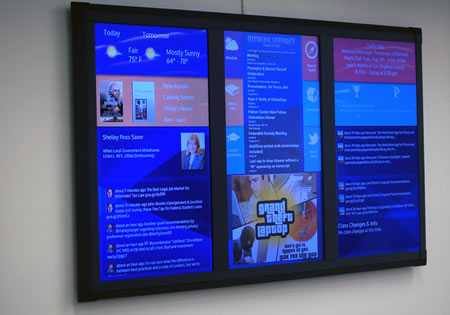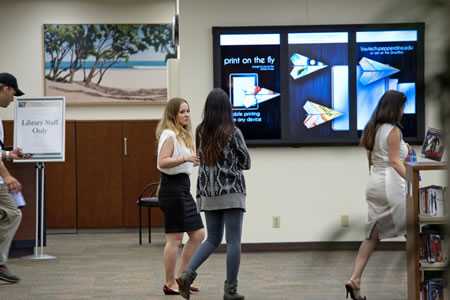Communications director says knowing who to target, and with what tools and platforms, could help ease communication with minimal resources.
 Modern technology has provided a multitude of communications platforms in our increasingly digital world. While this has brought the world to our finger-tips, it has also created a challenge for an organization wanting to reach its audience: how can an institution compete with all the white noise and provide opportunities for meaningful interaction with its campus?
Modern technology has provided a multitude of communications platforms in our increasingly digital world. While this has brought the world to our finger-tips, it has also created a challenge for an organization wanting to reach its audience: how can an institution compete with all the white noise and provide opportunities for meaningful interaction with its campus?
As colleges and universities face the ever-present threat of budget cuts, and enrollments fluctuate, the answer to this question may be critical. Consider, however, that this may not even be the right question – or at least the only question.
Think about the makeup of your institution. Think about the students, faculty, admin, stakeholders, and the general public who might interact with your school on a daily basis. Is this a homogeneous group? Likely, you pictured a set of distinct audiences, a heterogeneous blend of unique subsets, all of whom have different needs, wants, and expectations.
Now consider this – are they all receiving the same types of communication? If the answer is yes, then you might have your answer regarding the lack of traction you are getting. This one-size-fits-all approach to communication doesn’t work.
How, then, can a financially burdened, often understaffed communications team manage to create a unique message for each audience? Is this even possible? Fortunately, it is possible to communicate with multiple audiences; even with minimal access to resources. The trick is to know your audience, and maximize the value of your efforts.
(Next page: 5 ways to effectively communicate campus messaging)
1. Understand identity
First, you need to clearly understand your identity as an institution. What is the message you want to communicate? If you don’t know the answer to this question, you won’t be able to go much further. How else will you know if your message is getting through? Determining your institutions’s identity sets a solid foundation for your communication strategy.

2. Understand different segments
Second, you need to understand the various roles, strengths, and weaknesses of the individual segments of your organization. A university, for instance, is comprised of multiple schools. Each of these schools has a specific audience, specific program offerings, and specific career paths available for graduates of these programs. While there may be some overlap in culture, background, or ideals, most of these audiences want to be affiliated with their specific area of interest. A prospective student taking a guided tour of a medical school, for instance, doesn’t want to hear about how great the political science program is at the university.
While common interests between schools are good, promoting these interests should not detract from identifying for your audience the unique features of the schools or smaller organizational units. Promoting these unique features directly will be more valuable to the student, as they will affect the student’s career options moving forward.
If your university has fallen into this trap of promoting the name of the university over the brand of the school, now is the time to reconsider. Students will happily attend a school that gets the message right.
3. Craft a targeted strategy
Once the audience is identified, it is time to work on the targeted marketing strategy. This strategy will depend on where you are in the organizational structure. A university marketer’s audience is anyone interested in any, or all of the schools within, the university (such as the press). An individual school within a university has a more specific audience. This audience has needs and interests that can only be addressed by that school. A law school is the only school on campus that can reach people interested in studying law, for instance. The law school should then be responsible for targeting prospective law students, while the university will then promote the law school.

Broadcasting the same message to everyone might indeed get your message heard, but unless you actually reach the target audience, your message is joining the cacophony of competitors, media, and entertainment options all clamoring for your audience’s attention. A person hearing your message will immediately decide if your message is meant for them, and then respond accordingly, either tuning you out or paying better attention. Keeping with the prior example, sending a political science promotion to a potential medical student will get a response, but not the one you are looking for. Promoting a message the prospective student is actually interested will get you much further.
4. Consider multiple platforms
Now consider the various marketing platforms you are using. E-mail, websites, and a presence on one or more social media networks is a good way to get your message out to your audience. The information is put out there on the web, or in an inbox, and can be easily referenced. Without proper planning, though, this is analogous to plastering advertisements on the windshield of every vehicle at a concert or sporting event. Doing this just creates litter. It may be easy to just plaster the same message everywhere, and may even be appealing with limited staff resources. Resist the temptation, and you will see a marked difference in your response rates.
Let’s look at some examples. In a school, as in other organizations, e-mail is often the go-to tool for pushing content to our audience. In comparing the type of content sent to which audience, open rates were significantly higher when the message was clearly meant for that audience. When the admissions department e-mails prospective students who have already indicated interest in the school, they tend to open the e-mail message. However, e-mail messages sent to the entire academic community regarding a niche subject or event are rarely opened. The difference is that targeting the wrong audience is an uphill battle: you end up wasting your efforts, and don’t reach your audience.
But e-mail isn’t the only platform with a specific audience. Social networks also present unique challenges.
5. Know the social networking challenges
Social networking sites are popular among different demographics. Finding these might be challenging, but worth the effort. An undergraduate school posting on a social network has an audience that includes the prospective students, and their parents. A graduate school may have some parents in the audience, but will typically be more heavily populated with students, prospective students or alumni.
When a targeted story is posted, the response is impressive. You may get 100 likes on an animated GIF image if you are simply chasing page likes, but because the people providing these likes are not part of your audience they will quickly disperse. You are better off with 10 likes on something directly relevant to your audience. Cultivating stories that speak to the audience is far more effective use of time, which is already scarce. Avoiding lost time attributable to irrelevant content adds time to your day for other, more effective posts.
An effective communications strategy is one that starts with knowing your organization’s identity, and what message is desired. As content is produced, it can be parsed and sent to target audiences that actually want to receive the information, which limits lost time and resources and improves effectiveness and staff efficiency. It also makes the audience more receptive to future communication.
Whichever platform your organization uses to communicate, the audience will appreciate your time and care to cultivate content that matters to them. You then open the door for meaningful dialogue that benefits the audience and the organization.
Author Jared Padgett, D.B.A., will be presenting a general conference seminar at EduComm Expo 2015 entitled, “Stop Reinventing the Wheel! Your Guide to Effective Communication Across Platforms,” on Thursday, October 1st, from 1:00-2:00pm at the Georgia World Congress Center. For more information about EduComm Expo, or to register for this or any other educational seminar or workshop and learn more about digital communications technologies and strategies go to www.educommexpo.com
Dr. Jared Padgett is the Associate Director of Communications at Pepperdine University School of Law, and manages the technical side of a law school communications department, including web development, digital signage, and social networking. He helps departmental and organizational leaders by developing and managing projects to facilitate organizational requirements. Projects include development of an interactive touch-screen display featuring faculty scholarship, ongoing development of micro-websites for law school conferences, development of the law school’s social media presence, development of an internal communications platform, and leadership in a university-wide vendor search for digital signage from within a subsidiary school. Dr. Padgett regularly contributes to digital signage industry publications and conferences and serves on the EduComm Expo Advisory Board.
- 25 education trends for 2018 - January 1, 2018
- IT #1: 6 essential technologies on the higher ed horizon - December 27, 2017
- #3: 3 big ways today’s college students are different from just a decade ago - December 27, 2017

